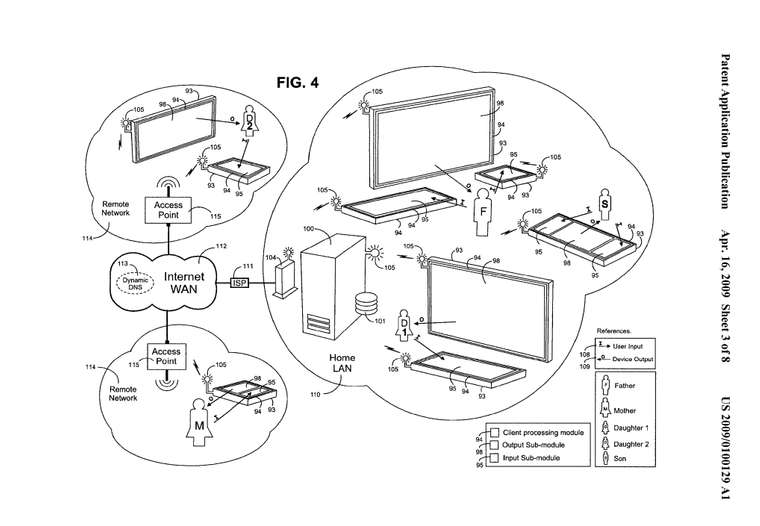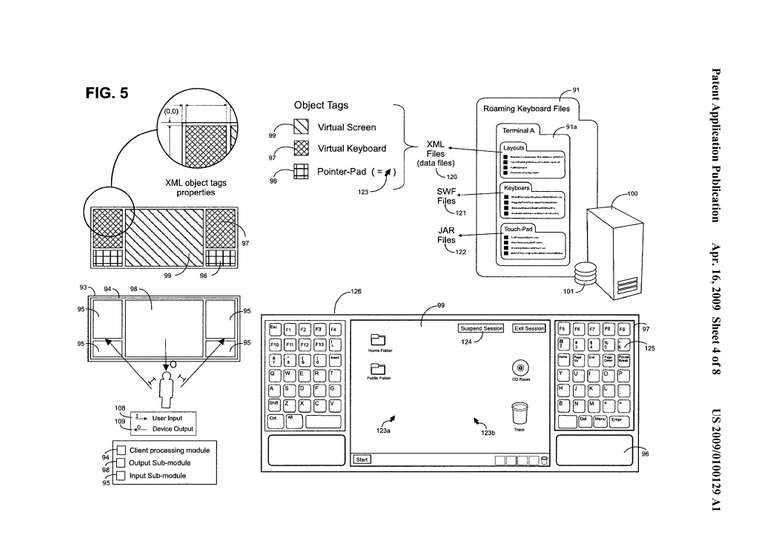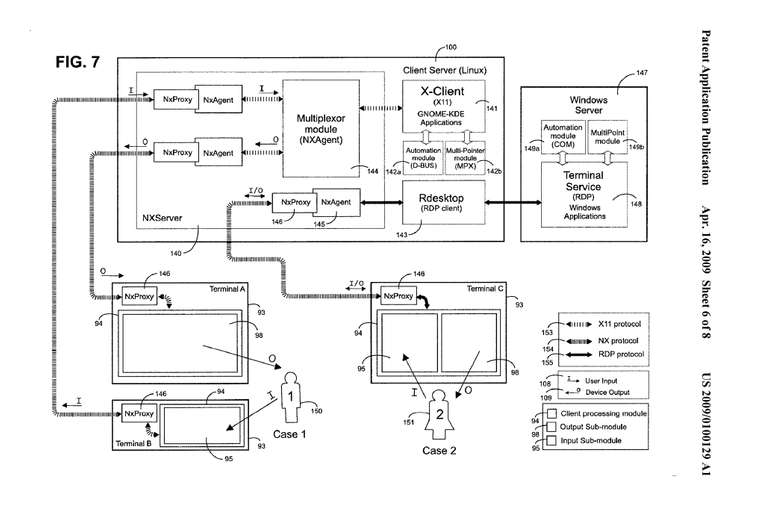Modular system from multiple touch devices
-
Dear community,
I am a developer. I am looking for advice in creating a cutting edge project with XCP. The time has come.
Congrats xcp! I think this new generation thin client technology is awesome and is ready for a big step. The proliferation of mobile devices can allow me to think that we can control computers from them.
The idea is to control applications on one screen at one device with via dynamic touchpads (with gestures) and keyboards generated and running on different devices (agnostic) distributed on the same LAN and running an app that connects to XCP as if it were a mouse or keyboard.
The features to append to XCP is to be able to receive mouse cursor coordinates from a virtual touchpad rendered on a remote device, map it from the device acting as touchpad into the server and showing the results of the cursor moving on the client screen like a computer or TV. Using Orchestra this can be possible to create interfaces like web-pages and keyboards that adjust to the type of application with different layouts for different scenarios. The server would be multiplexing the control messages between clients.
This is not a new idea, is something I tried in the part however the technology was not yet there. I fact I patented the idea at the USPTO and was granted (can share). Considering the mobile devices current cost and general IT framework in companies and homes can now be a proper time to start conversations with people who share the vision.
I would like to please ask for feedback and orientation on how to start exchanging with the community to consider the project. How to present it, who to share, interested companies.
Hope I can find friends to work with and rock it.
Thanks very much,
Jose Vigil -
Hi there!
Do you have some drawings/graphics for this, I'm not sure to grasp the thing

-
Hi! Yes of course, I am sharing some patent images and link.
THIN TERMINAL COMPUTER ARCHITECTURE UTILIZING ROAMING KEYBOARD FILES



As you can see it is aimed to be a modular system comprised of three types of modules, screen, touch pad (gestures) and keyboards. To redistributed and height customized for each case. Cases, something to still discover.
Note: The fact that NX is mentioned as a possible technology it is only for the purpose to explain the internal behavior.
Hope you like it.
-
Apologize if my drawings are little too sophisticated, let me please elaborate the idea from real products.
A similar approach that has recently raised is the Samsung Dex where from a cellphone touch screen you can control a desktop. Like such.
https://youtu.be/umvnRlj9yN8?t=62
However a more advance used that would make the experience more powerful would be using a real desktop initiative like the alliance with Citrix.

Said this, the modular system of touchpads screens and keyboards I thought could be a future version however a simple idea of this is used by Dex and Citrix with virtualized apps that, as far as I am concern would be inflicting the patent.
My enhancement is to work out the interfaces to control such applications and customize them in different screens. I think that there will be a time when XCP and Xenserver will ultimately include touchpards and virtual keyboards as a way of naturally control the virtualized apps with more natural language like gestures.
Thanks for reading,
Jose Vigil -
@JoseVigil this is very meta .... don't expect we get the whole idea ... do you have more real examples what it could be used for?
I try to understand what I could do with a second/third/fourth input device. And if I don't have multiple input devices, do I loose some features I have with them?
A example I could image: To switch the showed console on the monitor to another VM via the smartphone. But that's too simple for a real world scenario

Or do you have in mind to control the inner things of a VM via the "input devices"? ... hmm...

Edit:
Patents? Really? XCP-ng is a open source project... We don't want to do things to make money with proprietary things/technology. We want to enable users to use XCP-ng. I don't get your point.Disclamer: This all is my personal opinion. I'm only a community member and can not speak for the whole project. If you want to have more official answers, contact the project founder @olivierlambert
-
This all seems very over the top for what you're trying to achieve - since there are much simpler solutions out there. BTW, a much better approach than Samsung Dex was Microsoft's Continuum. It, unfortunately, did not catch on in the consumer space (nor will Dex); and, thus, has been relegated to niche business use.
I see where you're going with the end concept; but, it is highly unlikely (if not impossible) that such an approach would ever be broadly accepted and implemented in any typical user environment - it's essentially the same management/implementation problem as existing solutions - you're just moving the burden to another portion of the process with no real advantage.